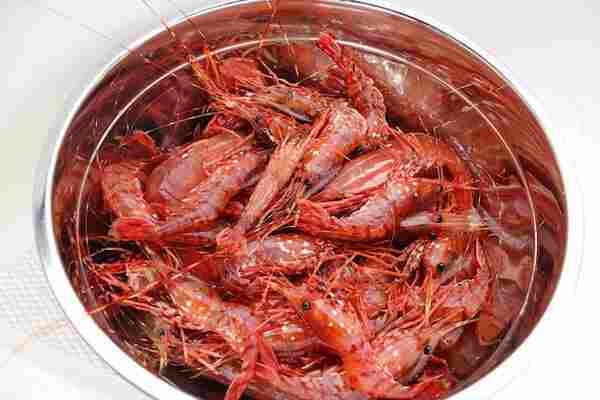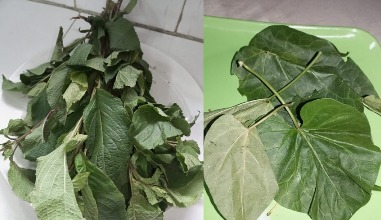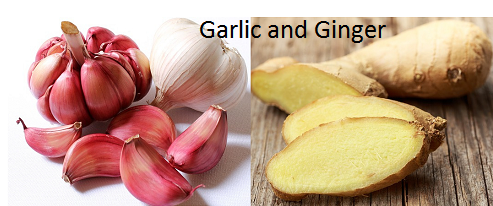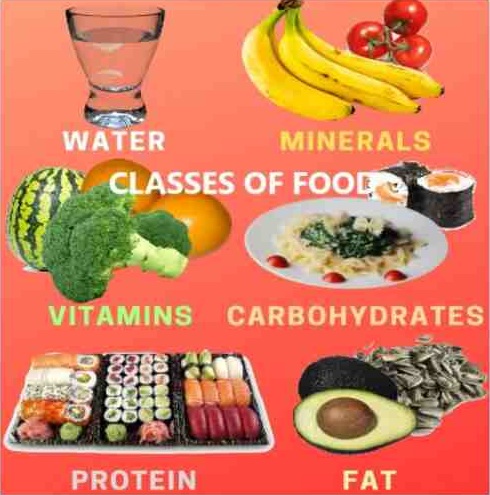
The Six Classes of Food and Their Functions – 6 Classes of Food
The world of food is vast and complex, with different cultures and cuisines to explore. In this blog post, we’ll be taking a closer look at the different classes of food.
The body needs these 6 classes of food nutrients from different categories to aid in the development of our bodies and the maintenance of our health.
It is crucial that everyone takes these 6 classes of food nutrients on a regular basis. These include carbohydrates, proteins, fats, vitamins, minerals, and water. Dietary deficiency, excesses, and imbalances can have a detrimental effect on health and contribute to disease.
In this article, we are going to see how each of these nutrients is utilized by our body to promote healthy growth and development.
What is food?
food is a substance that is mostly made up of nutrients such as carbohydrates, fats and protein is used by humans to enhance their growth and essential functions.
Importance of Food
Food are substances that humans must consume in order to thrive and for proper body functions. The following are some reasons why food is important:
- It promotes growth.
- Food satisfies hunger.
- It is consumed to nourish the body
- Food promotes a healthy living.
- It provides energy that enables physical activities
- One can recuperate faster with proper nutrients from food.
- Food is eaten for the purpose of appropriate nutrition
Classification of Essential Nutrients?
These vital nutrients are categorized into two major food groups.
- Micronutrients
- Macronutrients
These nutrients are divided into two based on the quantity that each person needs to take everyday. These include micronutrients, which are only necessary in trace levels, and macronutrients, which should be consumed in relatively high quantities.
What Are The 6 Classes of Food?
There are six major classes of nutrients:
- Carbohydrates
- Fats
- Proteins
- Vitamins
- Minerals
- Water
Carbohydrates, protein, Fat, vitamins, minerals, and water are among the six categories of food. Although some school of thought believes there are only 5 classes of food while another group says it is 7 classes of food which includes fiber.
You should incorporate a balanced diet in your normal routine meal because eating nutritious foods keeps you healthy.
In fact, water is one diet you cannot survive without consuming. So any consumed substance that provides nutritional support and value is classified as food and water is part of it.
The Six Classes of Food with Their Functions & Examples
All the food classifications you need to know, their functions and example
Carbohydrates – 6 Classes of Food
Carbohydrates are the nutrients that provide energy and are present in foods like potatoes, rice, cassava, corn, grains, and other starches.
There are six different categories of carbohydrates: simple, complex, starch, sugar, fiber, and sugar alcohols.
Among simple carbohydrates are glucose and sugar. Whole grains, oats, and beans are examples of complex carbohydrates, which include multiple types of molecules.
Starchy Carbohydrate amylose and amylopectin are the two different types of molecules that make up the carbohydrate known as starch.
Fiber is not an energy-giving carbohydrate, it might help you feel fuller for longer after eating. Fruits, vegetables, and whole grains are included.
A form of carbohydrate that doesn’t include sugar is called a sugar alcohol. They consist of substances like xylitol and maltitol.
Proteins – 6 Classes of Food
We have plant and animal protein; meat is a good source of protein
Protein “bodybuilding food” is an essential nutrient for building muscle and is present in beans, meat, seafood, poultry, and dairy products.
Proteins are made up of many building blocks, known as amino acids. Dietary protein is required by our bodies to provide amino acids for the growth and maintenance of our cells and tissues. The amount of protein we need in our diet varies throughout our lives.
They contribute to every aspect of muscular contractions to cellular function and are necessary for growth and maintenance.
Fats and Oil – 6 Classes of Food
Nuts and fruits like avocados are rich in fats. They assist the body absorb essential nutrients and serve as a source of energy. Saturated, unsaturated fats, monounsaturated, and polyunsaturated fats are the different types of fats.
Saturated fats are more harmful to the human body since they can raise the risk for heart disease or other chronic ailments. Unsaturated, monounsaturated, and polyunsaturated fats don’t increase blood cholesterol levels as much as saturated fats, they are beneficial for the heart.
Omega-3 and omega-6 fatty acids is a type of good fat that is included in polyunsaturated fats, and are important for proper brain function.
Vitamins – 6 Classes of Food
Vitamins are essential for preventing illness and staying healthy and aids in wound healing. Vitamins help strengthen the immune system and are present in fruits and vegetables.
These micronutrients are necessary for the body to improve its capabilities. There are 13 essential vitamins, including vitamins A, B, C, and D, that the body needs to function properly.
Vitamins can be fat-soluble or water-soluble. Vitamins are essential for healthy bones, skin, and vision. Vitamins are powerful cancer prevention agents that reduce the risk of lung and prostate cancer. Vitamins like vitamin C support the immune system and help the body heal.
Read Also >>>>Top Nigerian Soups You Can’t Resist
Minerals – 6 Classes of Food
Minerals are present in the majority of foods, including fruits and vegetables, and are essential for improving bodily functions. Minerals can be found in both plant and animal sources.
Minerals perform a range of functions, from structural to regulatory, such as sodium and potassium in fluid balance and muscular contractions, and calcium in bones and teeth.
Water – 6 Classes of Food
Human bodies contain about 65%, water which aids in nutrient circulation, absorption, digestion, and excretion.
Water is a substance that is present in fruits, juices, and other liquids and is used in the production of bodily fluids. Water assists in the maintenance of body fluids and keeps the PH of the body at a normal level.
Water helps with toxins removal, transport of nutrients to cells, body hydration, and clog prevention.
Additionally, water is important for regulating and distributing our body temperature. Water also lubricates the working joints and eyes of our bodies.
What are the 3 main classes of food?
Carbohydrates, fats, and proteins are the three main categories of food molecules examined in science. We eat these, which are also referred to as macromolecules, in the form of food. They are all required by our bodies in various ways.
Carbohydrates are classified into three types
Carbs are present in almost everything we eat, but not all carbs are created equal.
Classification of carbohydrates
- Monosaccharides – Glucose, Fructose, Galactose
- Disaccharides – Sucrose, Trehalose, Maltose, Lactose
- Polysaccharides – Starch, Cellulose, Glycogen,
These are the three different categories of carbohydrates.
For some school of thought, carbohydrates consist of:
1. STARCH
Vegetables, grains, and legumes all contain complex carbohydrates. While starchy meals are generally criticized, they deliver essential minerals such as iron, calcium, and B vitamins to the body. Overeating potatoes, rice, and breads, on the other hand, can result in a food coma or make you sleepy afterward.
2. SUGAR
While sugar is a well-known carb, the term “carbohydrate” encompasses much more than the white stuff you put in your tea.
So, what exactly is sugar? Sugar is a term that refers to a variety of sweet, colorless, water-soluble substances. Sugars can be found in a variety of foods, including fruits, vegetables, milk, and more.
The most prevalent form is sucrose (or table sugar), which is present in soft drinks and processed foods. Fructose, which comes from fruit, and lactose, which comes from milk.
3. FIBER
Fiber is also classified as a complex carbohydrate with less calories. Fiber – Found in fruits and vegetables, grains, fiber is an essential component of digestion.
Fiber adds bulk to faeces, prevents constipation, and aids the easy passage of stool. Fiber isn’t digested by the body and instead passes mostly undamaged through the stomach. While this may seem unusual, fiber keeps you full and content after you eat; likewise reduce craving.
Fruits, vegetables, whole grains, and cooked dry beans/peas are all good sources of these nutritious carbohydrates. Fiber may have a beneficial influence on cholesterol in addition to digestive health.
Conclusion on the 6 Classes of Food
Ensure your meals at each sitting contains all the classes of food “balanced diet”.
Eat healthy and stay hydrated always.
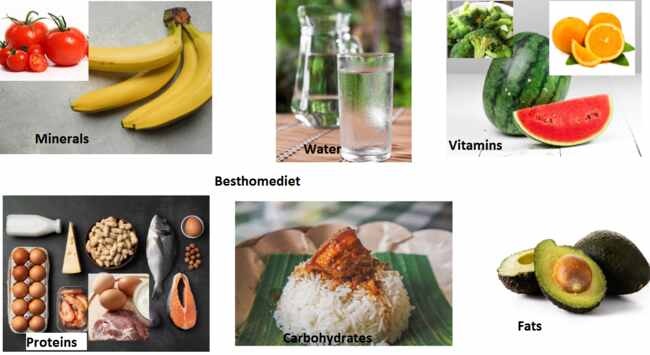
Frequently Asked Questions on Six Classes of Food
What are the 7 food classes?
More than 40 distinct types of nutrients can be found in food, that are typically divided into the following 7 food groups:
- Carbohydrates
- Fats
- Proteins
- Vitamins
- Minerals
- Dietary fiber
- Water
What are the classes of food with examples?
Carbohydrates – are the nutrients that provide energy and are present in foods like potatoes, rice, wheat, corn, and also other starchy carbohydrates fats.
Proteins are essential nutrients for developing muscle and are present in meat, beans, and dairy products are a good source of protein.
Fats and oil – Nuts and fruits like avocados are rich sources of fats.
Vitamins and minerals are mostly present in fruits and vegetables.
Water – a human basic need for survival.
What is food and its classification?
Food primarily consists of lipids, proteins, carbs, and water. Basically, anything taken as food gives an organism energy and nutrient support. Humans consume it for development, health, or enjoyment and it can be eaten in raw, processed, or prepared form.
What type of food is protein?
Plant-based foods (fruits and vegetables, grains, nuts, and seeds) frequently lack one or more essential amino acids, but animal-based foods (meat, chicken, fish, eggs, and dairy products) are frequently good sources of complete protein.
Which are the healthy fats?
Monounsaturated and polyunsaturated fats, or what is called good unsaturated fats, reduce the risk of disease. Vegetable oils (including olive, canola, sunflower, and soy), nuts, seeds, and fish are among the foods high in healthy fats.
What are the types of food?
Which five food groups are there
- Starchy food.
- Fruit and vegetables.
- Protein
- Fat
- Dairy
What are 4 main foods?
The four major food groups are what you should consume each day in order to receive the nutrients you need for both your physical and mental wellbeing. These include grains, dairy products, fruits and vegetables, and protein-rich foods.
What are functions of food?
The three reasons of eating are to provide nutrients, regulate physical functions and address psychological needs.
What are the examples of minerals in classes of food?
Calcium, iron, potassium, magnesium, zinc, and other elements are examples of minerals found in many food classes.
What food lasts the longest?
13 Foods With Exceptionally Long Shelf Lives
- Salt – Forever
- Worcestershire Sauce – Indefinitely
- Hard Liquor – Unopened almost Forever
- Canned Beans – for like 30 years
- Ramen Noodles – for about 10 years or more
- Honey – For more than 10 years
- Flour – for about 5 to 8 years
- Dried Pasta – for about 5-8 years.

